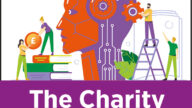Marketing & communications, AI (Artificial Intelligence) Hub
How to stop the “AI voice” from taking over your charity’s comms
In this article, Gabriella Poznansky explores the ethical, environmental, and practical concerns around using AI in charity communications, urging organisations to think critically and use these tools with care.
Not entirely convinced by using AI in your charity’s communications? Listen – I totally get it.
These tools can be overtly inaccurate, biased, or overconfident in their responses. They can lack nuance, context, sentiment, or the emotional intelligence needed in sensitive comms. And of course, they can have a huge environmental impact.
Running large AI models consumes vast amounts of energy, water and requires rare minerals, and contributes significantly to greenhouse gas emissions.
It’s not the perfect solution, and I personally believe it shouldn’t be used haphazardly.
However, even if you’re not actively using it, chances are one of your staff members or colleagues is. Whether it’s to draft emails, summarise reports, brainstorm ideas, write blogs, or tidy up grammar, in some way, shape, or form, it’s already helping them manage their workload.
That’s why it’s so crucial that if your team is using AI tools like ChatGPT or Gemini, they know how to use them properly, have a structured policy to follow and a proper understanding of the copyright laws surrounding it. Also, it’s crucial that they know these tools are not infallible.
We need to think critically about these platforms and not overly rely on them, especially when we consider the ethical and environmental costs of deploying AI at scale. It should support our work, not replace the thinking behind it.
If you’re using it in your external comms, you need to think about how you can use it to propel your charity’s mission and voice. The problem is, if the tone hasn’t been curated, the structure hasn’t been shaped, and the message hasn’t been made your own, that unmistakable “AI voice” can end up dominating. And although it’s coming up with a LinkedIn or BlueSky post for you, it doesn’t mean that it knows the best way to communicate with your beneficiaries or network. However, you do!
So, if you’re using it for your charity’s external comms or even your own, it works best when you filter your knowledge and understanding of your comms into the programme. But honestly, it works best if you just use it for admin jobs that usually take you ages to do or for things that you struggle with, leaving you more time to write and be creative!
There are other ways that you can make sure that the tools you’re using are tailored to your charity’s voice. But you have to remember, creating strong content with AI is a skill in itself. It’s a tool you have to learn to use, and more importantly, one you need to challenge. Just like you wouldn’t publish a first draft without editing, you shouldn’t blindly copy and paste what AI comes up with.
Here are three quick tips:
- Always fact-check the information that it produces
- Use it in a way that gives you more time to be creative, get it to help you with making content calendars and systems that take you time to do
- When using AI to write something for you, be sure to guide it by specifying the tone you want, providing examples, and including any relevant information directly, such as copying and pasting text from a website, instead of just sharing a URL
Ironically, to crack using AI well, you often have to do more work than just writing that blog or social media post from scratch. But once you’ve developed the muscle, it can be worth your time, especially if you’re a small charity worker juggling multiple roles and endless tasks.
I know many charity professionals – particularly those in small charities – are reluctant to use AI at work, and understandably so. There are real concerns around data privacy, misinformation, and ethics. But even if you choose not to use it, chances are someone on your team is and that’s why it’s essential to have clear guidance, a solid policy, and a shared understanding of how and when to use AI responsibly.
So bring your team to our upcoming conference this July to safeguard your charity and discover how to responsibly work with AI tools. Register to The Charity AI Conference here.


Social Media for Voluntary Organisations
Social media has become an increasingly important means of connecting with the world around us.
Aimed at small and medium-sized organisations that want to improve their social media engagement and reach, as well as those who are just starting out, this is essential reading for everyone involved in social media communications in the voluntary sector.